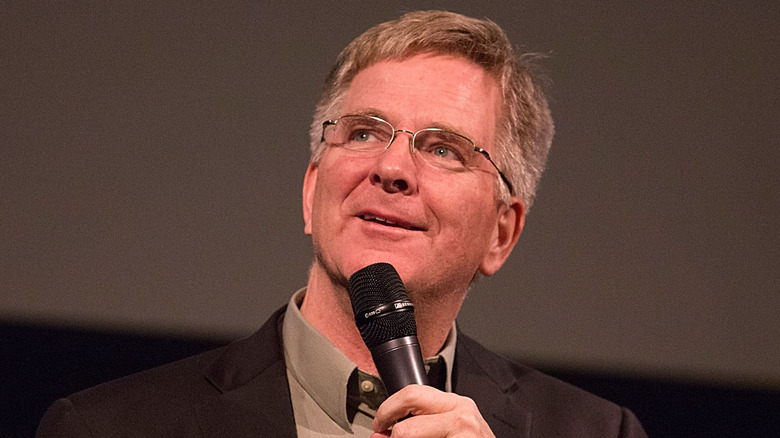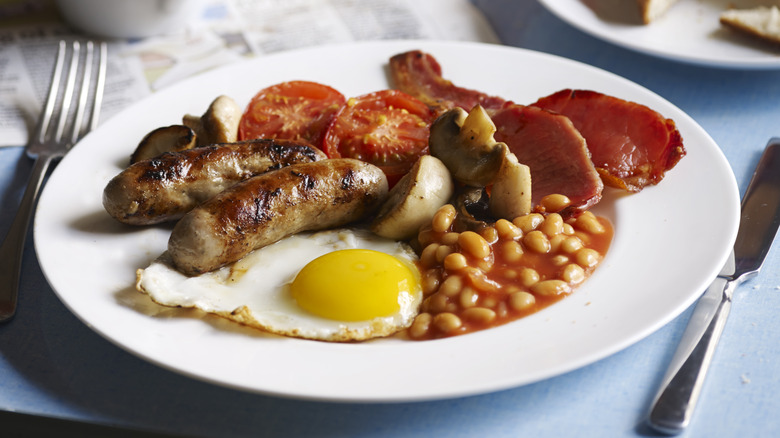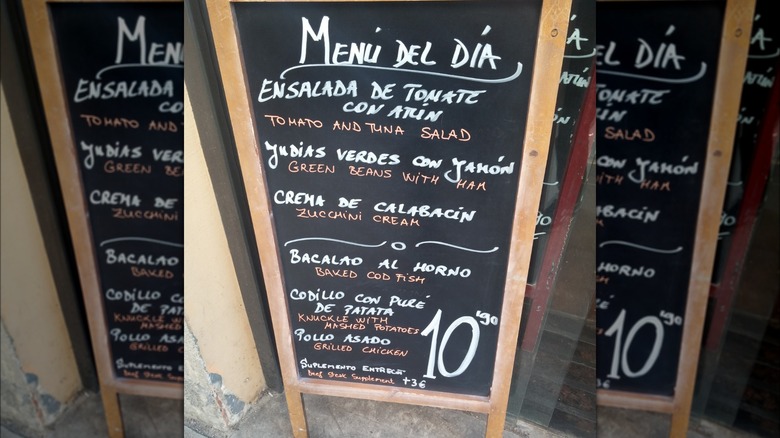The Breakfast Rick Steves Says You Should Skip When Dining In Europe
Breakfast is widely considered to be the most important meal, giving you the first boost of energy you need to start your day. When you're traveling through Europe and need lots of strength to climb the steps of the Eiffel Towers or wander through the galleries of the Rijksmuseum, a good breakfast is even more important.
Rick Steves, a travel expert who has been helping tourists get the most out of their European vacations for over 50 years, has a money-saving tip for the next time you're touring the continent: Skip hotel breakfasts (per Rick Steve's Europe).
You may be tempted by the convenience of grabbing your first meal of the day at your hotel's restaurant. However, if breakfast isn't already included in the cost of your room, it's not worth eating there. Hotel breakfasts can be expensive and unexciting. Instead, head to a local cafe for a cheaper choice. You'll get to mingle with the locals and likely try some more traditional breakfast foods.
Traditional European breakfast foods
Depending on where you are, regional breakfast foods will vary, but there are a few that pop up on breakfast menus more often than others: Bread and pastries are a popular choice, and many countries are known for a specific type. For example, France is famous for its classic butter croissants, and lavash, a thin bread, topped with cheese curds and rosehip jam is a common breakfast in Armenia.
Meat frequently appears in the morning meal as well. A full English breakfast typically includes sausage, black pudding (aka blood pudding), and bacon — or "rashers." In Germany, weisswurst is a white sausage made from veal and back bacon that is served in the morning.
Espresso was invented in Italy where breakfast is often a small, quick meal. Italians often pair their espresso with a pastry, like a cornetto, the Italian version of the croissant, or biscotti, crisp cookies perfect for dipping in your coffee, along with fruit or yogurt. In Turkey, black tea is typically served with breakfast, which resembles a feast. Turks enjoy a whole spread of foods at breakfast, including multiple types of cheese, sweet and savory dips — black olive spreads and Nutella are both popular — jams, eggs cooked with sausage or vegetables, and bread. Simit, a seedy Turkish bagel, is a particularly popular bread choice for breakfast.
More money-saving food tips for Europe
If you're traveling to eat, you'll want to fit as many delicious foods into your budget as you can. Try making lunch your biggest meal of the day. Some European restaurants have fixed-price lunch specials that allow you to save up to 30% compared to their a la carte menus. Fill up at lunchtime, then grab snacks or smaller bites for dinner. Even the locals follow this practice in some countries. In Spain, for example, lunch is traditionally the biggest meal of the day, and many restaurants offer a "menu del dia" to attract customers with a good deal. Spaniards will finish their day with a light dinner or tapas, small appetizers served with complimentary drinks.
You can also find cheap meals at cafeterias throughout Europe. Many department stores, libraries, churches, and community centers offer self-serve food bars and cafes. Some, like the cafe at the Amsterdam Public Library, have terraces with great city views. Try visiting university or hospital cafeterias to find cheap, hot meals.
Carry a water bottle with you to avoid having to purchase water throughout the day. Across Europe, many restaurants serve only bottled water. Even if they do offer it, tap water isn't always free in Europe. Save your beverage budget for more exciting drinks, so you can drink limoncello like a European or a stein full of beer like a Czech.



